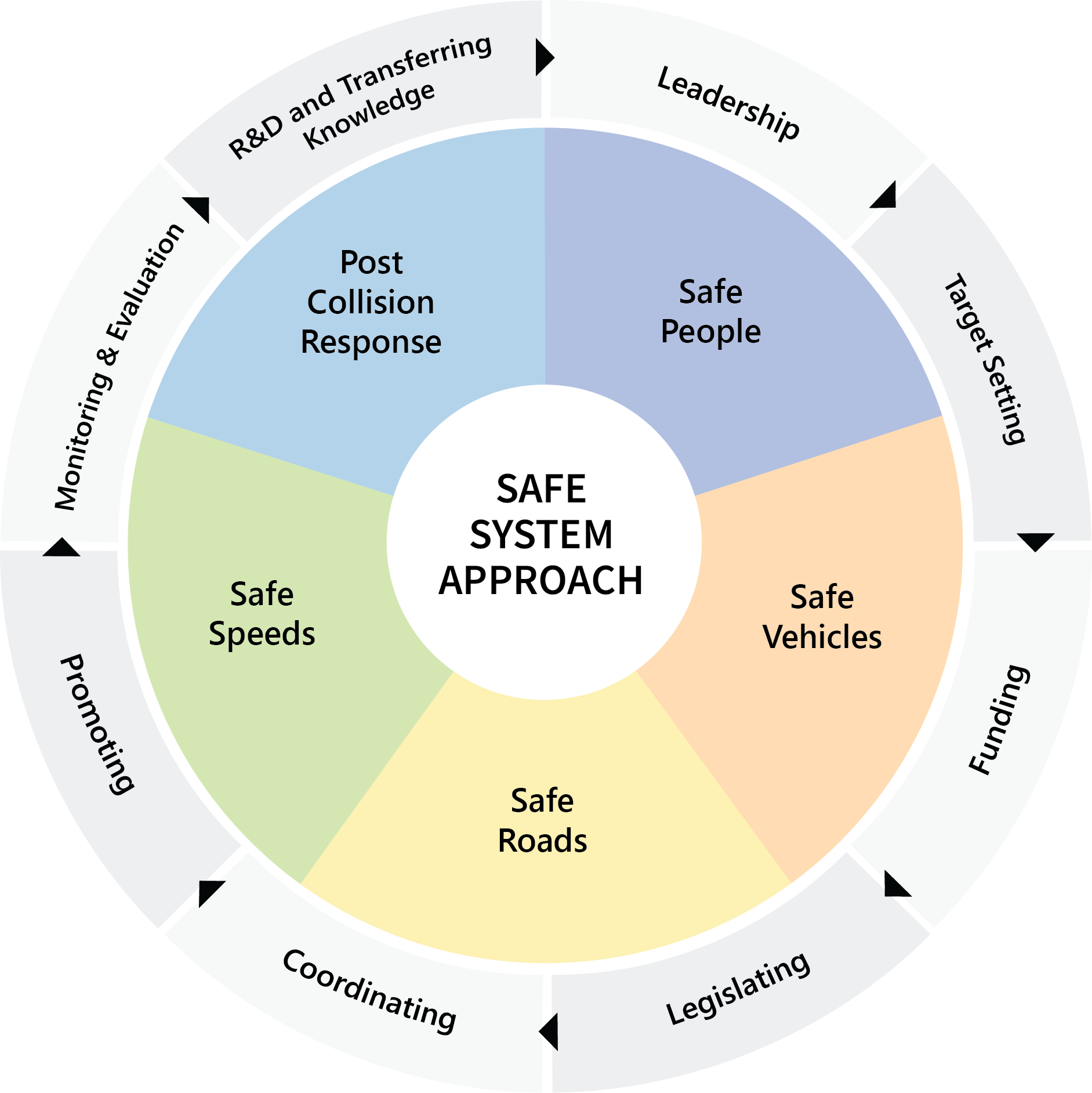Road Safety Management
Road Safety Management provides the foundation for the Safe System. It ensures that strategies, resources, and responsibilities are aligned through strong leadership and coordinated action to reduce deaths and serious injuries.
On this page, you’ll find an overview of the key elements of Road Safety Management and an explanation of the implementation gap – why good plans don’t always lead to safer outcomes, and how that can be changed.
Table of Contents

Key Elements of Road Safety Management
The following content highlights the core elements of effective road safety management. Each element is explained with a focus on its role in promoting safer road environments and fostering collaborative efforts to reduce risks and improve outcomes.
Funding
Funding secures the necessary resources to implement impactful safety initiatives. It is a fundamental requirement for all road safety efforts that support the elements of the Safe System.
Legislating
Legislation defines the laws and rules required to create safer road environments. It can serve as a deterrent to potential motoring offenders, a means of punishing those who offend, and a form of justice for victims involved in collisions, whether directly or indirectly.
Coordinating
Coordination brings together stakeholders from various sectors to align their efforts and act in harmony. Including the Government of Jersey, the States of Jersey Police, Fire and Rescue Service and Ambulance Service.
Promoting
Promotion increases public awareness of road safety issues and encourages behavioural change. This can range from educating the public on changes to the Highway Code to engagement events such as Jersey’s Tyre Safety Event.
Monitoring & Evaluation
Monitoring and evaluation involve assessing the performance of road safety measures through data-driven processes. The Safe System emphasises the use of data to inform decisions – such data may include collision and casualty statistics, which are closely monitored and evaluated on an annual basis.
Research & Development (R&D) and Transferring Knowledge
Research and development focus on creating innovative solutions to emerging road safety challenges. The Government of Jersey is drawing on the experiences of countries that have set high standards in road safety, such as Sweden and the Netherlands.
Leadership
Leadership drives the vision and commitment needed to achieve a safer road system, it is required for any goal to be achieved by guiding direction as to how to achieve the desired outcome.
Target Setting
Target setting establishes clear, measurable goals for reducing road collisions. Jersey's main target is to reduce serious or worse collisions by 50% by 2034.
The Implementation Gap
Bridging the Outer Layer and the Core Principles
The Implementation Gap between the outer layer and the core principles of the Safe System Approach (Safe Roads, Safe Speeds, Safe Vehicles, Safe People, Post-Collision Response) is a critical challenge in achieving road safety objectives.
This gap can be effectively addressed through a model focusing on Commitment, Capacity, Capability, and Culture, which are further explained below:
Commitment refers to the strong leadership, stakeholder ownership, and sufficient resources needed to achieve its goals effectively.
When Government agencies and politicians have a commitment to road safety this provides the support needed to make the roads safer.
Capacity refers to the organisational ability to deliver Safe System interventions. This includes ensuring they have sufficient personnel, tools, and systems to plan, implement, and manage road safety initiatives effectively – particularly in line with Jersey’s goal to reduce serious collisions by 50% by 2034.
Culture represents the shared mindset and collective commitment to road safety among government bodies, professionals, and the public.
A strong safety culture aligns behaviours, values, and expectations; encouraging everyone, from policymakers to individual road users, to take responsibility for protecting one another on the road.
